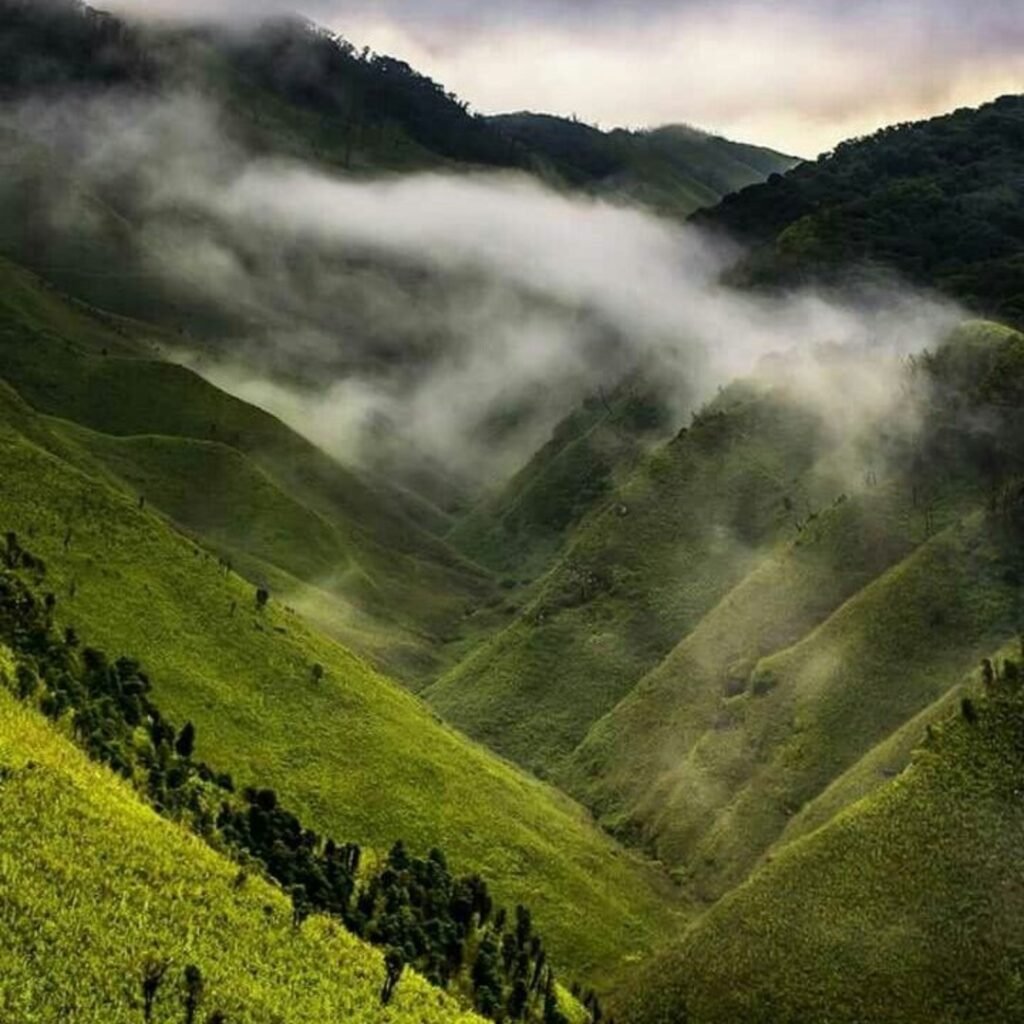In the northeastern reaches of the vast Indian sub-continent, a realm of both perplexity and intricate tapestry awaits the discerning traveler. Nagaland, although not an actor in the grand theater of well-known destinations, houses a trove of captivating insights, yearning to be unveiled. From its vibrant symphony of tribal cultures and ancient rituals to the sprawling landscapes that grace its borders, Nagaland’s narrative weaves a tale of resilience, metamorphosis, and the delicate equilibrium between venerable heritage and the allure of progress. Join us as we embark on a journey to unmask ten intriguing verities that extend a profound glimpse into the very soul of Nagaland – a gem, till now, secluded from the scrutinizing gaze of the world.
1. Mosaic of Tribes: In Nagaland, the intricate design of tribal existence transcends the realm of the major 16 tribes, spreading its filigree across the intricate lattice of sub-tribes within. The Angami tribe, for instance, diverges into Southern and Northern Angamis, each with its distinct lexicon, rituals, and ethos. This intricate interplay of tribes and sub-tribes bequeaths Nagaland a vibrant fabric of cultural heritage.
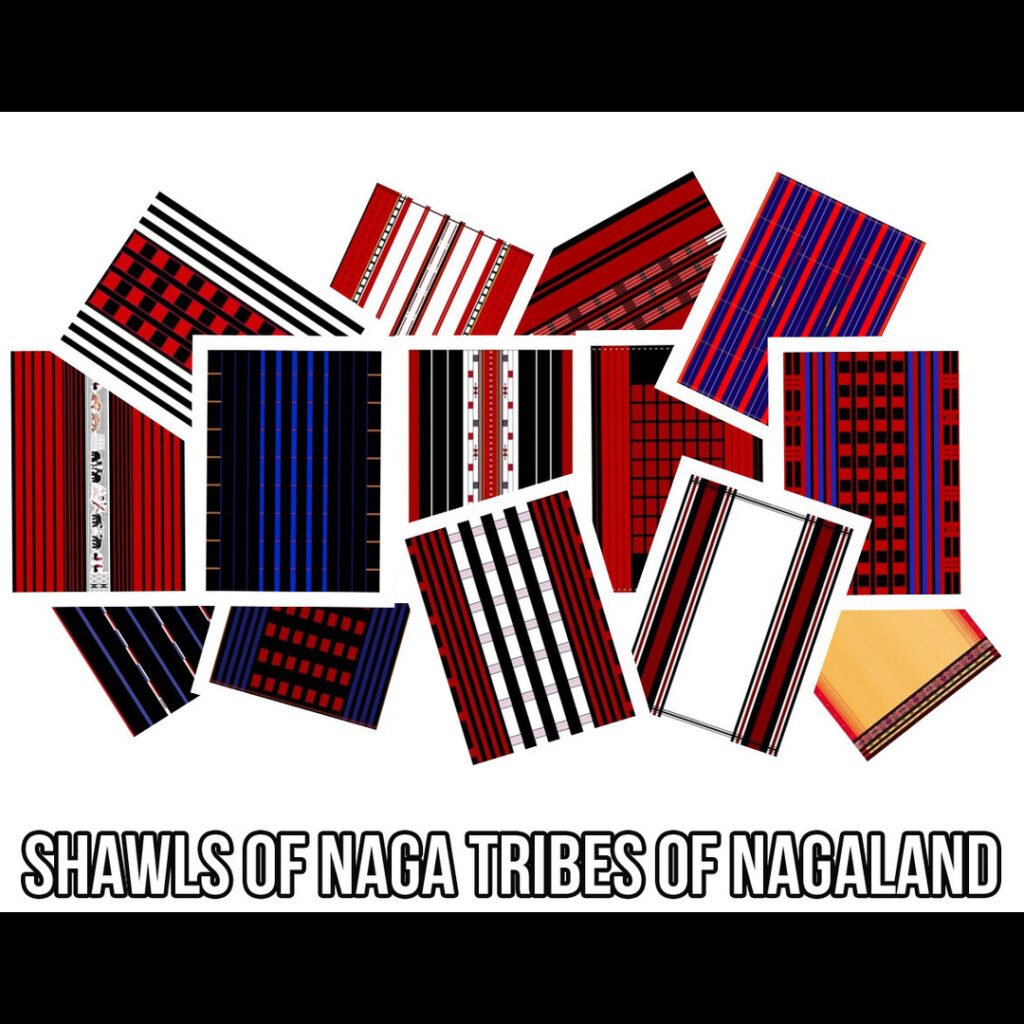
2. The Chronicle of Headhunting: Headhunting, a practice echoing valiance and ardor amongst Naga warriors, finds its place in history’s chronicle. This act, while seemingly morose, stood as a testament to safeguarding the honor and territorial integrity of a tribe. The Konyak tribe, known for their ornate facial etchings, oft employed the skulls of vanquished foes as emblems of authority. The cessation of this practice marked a seminal juncture in Naga history, ushering a transition towards harmonious cohabitation and the preservation of tradition.

3. The Festive Exuberance: The Hornbill Festival, a mélange of vibrant performances and captivating stalls, transcends mere spectacle. It becomes a platform for Naga tribes to showcase their agrarian savoir-faire, craftsmanship, and ancestral games. Beyond this, the festival resonates with an environmental clarion, echoing the intimate rapport the Naga people share with the natural world.

4. Attire and Embellishments: The array of traditional attire in Nagaland is a tapestry woven from the indigenous milieu and way of life. For instance, the Ao tribe’s shawl bears a testament to nature’s bounty, while the Konyak tribe’s garments are adorned with intricate beadwork. Tattoos, not merely decorative but signifiers of valor, achievement, and spirituality, narrate the personal and collective odysseys etched within each tribe.
5. Harmonies and Verbal Traditions: Folk songs in Nagaland’s repertoire house a treasury of cultural history. The “Li” of the Angami tribe, resonant poetic ballads, weave tales of tribal lore, moral teachings, and historical accounts. Naga music, an assemblage of diverse genres, sweeps from mellifluous refrains accompanied by bamboo flutes to rhythmic war chants embodying unity and courage’s spirit.
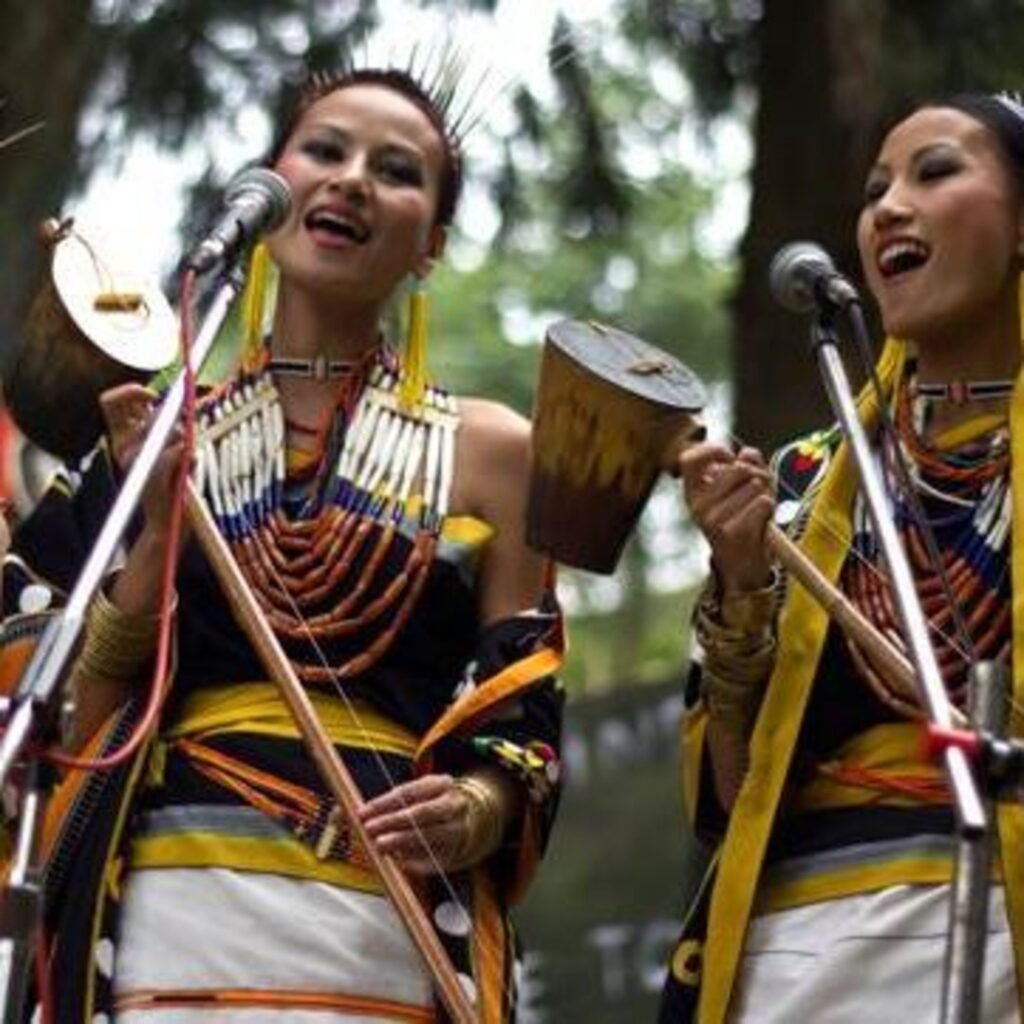
6. Gastronomic Odyssey: Naga cuisine unfolds as a culinary sojourn, revealing the resourcefulness of its people. Fermentation, a culinary art form, stands at its heart. Smoked meats not only preserved sustenance but also introduced distinctive flavors. Fermented bamboo shoots lend their essence to dishes, while the renowned Bhut Jolokia chili, beyond its fiery piquancy, bestows a singular savor to the fare.
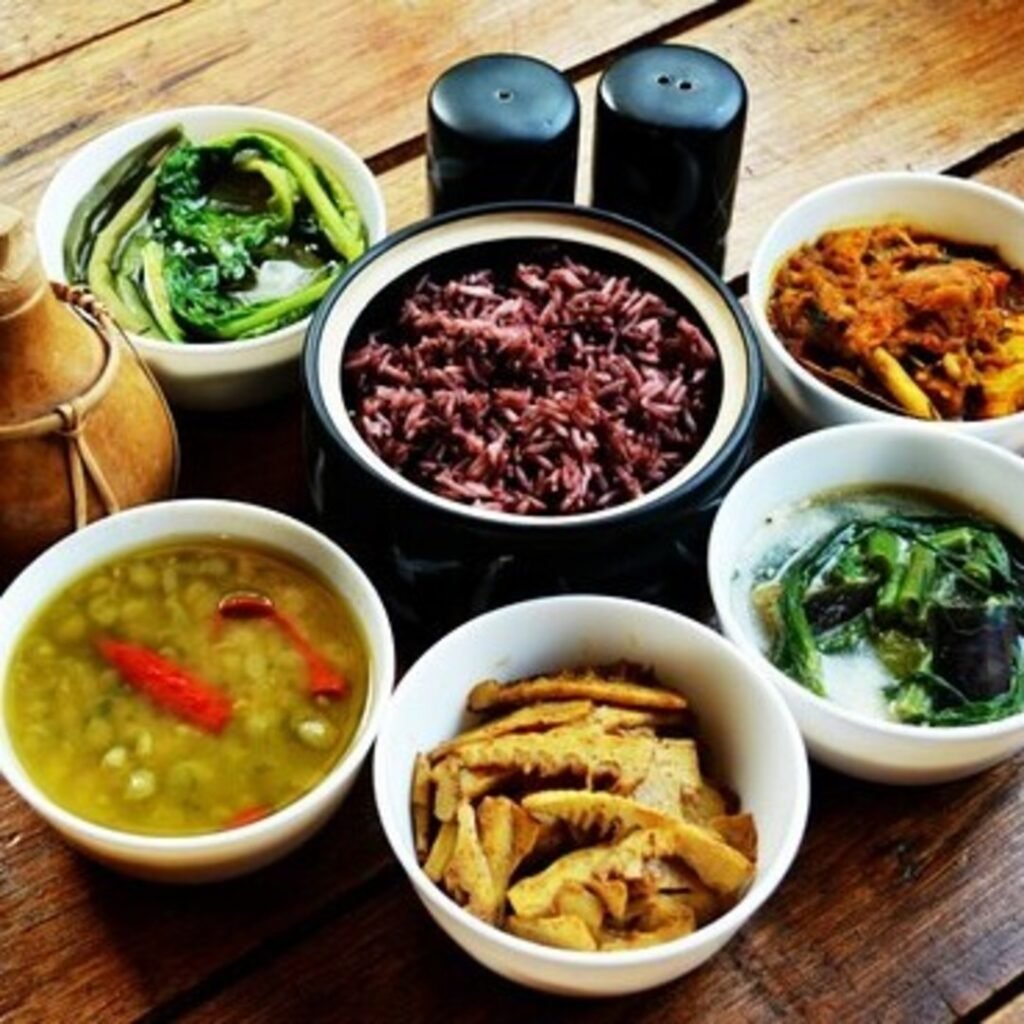
7. Echoes of Megaliths: The megaliths that grace Nagaland’s landscape transcend being mere monuments; they serve as repositories of bygone tales and ancient rituals. The Ahom erect monumental monoliths named “Lakas” in homage to their ancestors. Many of these enigmatic stones bear intricate carvings depicting creatures, weaponry, and human forms, offering glimpses into the artistic sensibilities of yesteryears.

8. Languages and Vernaculars: Nagaland’s linguistic tapestry is a reflection of its intricate topography. The Sumi dialect, for instance, exhibits nuanced variations across geographical domains. The Ao language is celebrated for its intricate honorifics, attesting to the cultural significance of courtesy and reverence within Naga society.
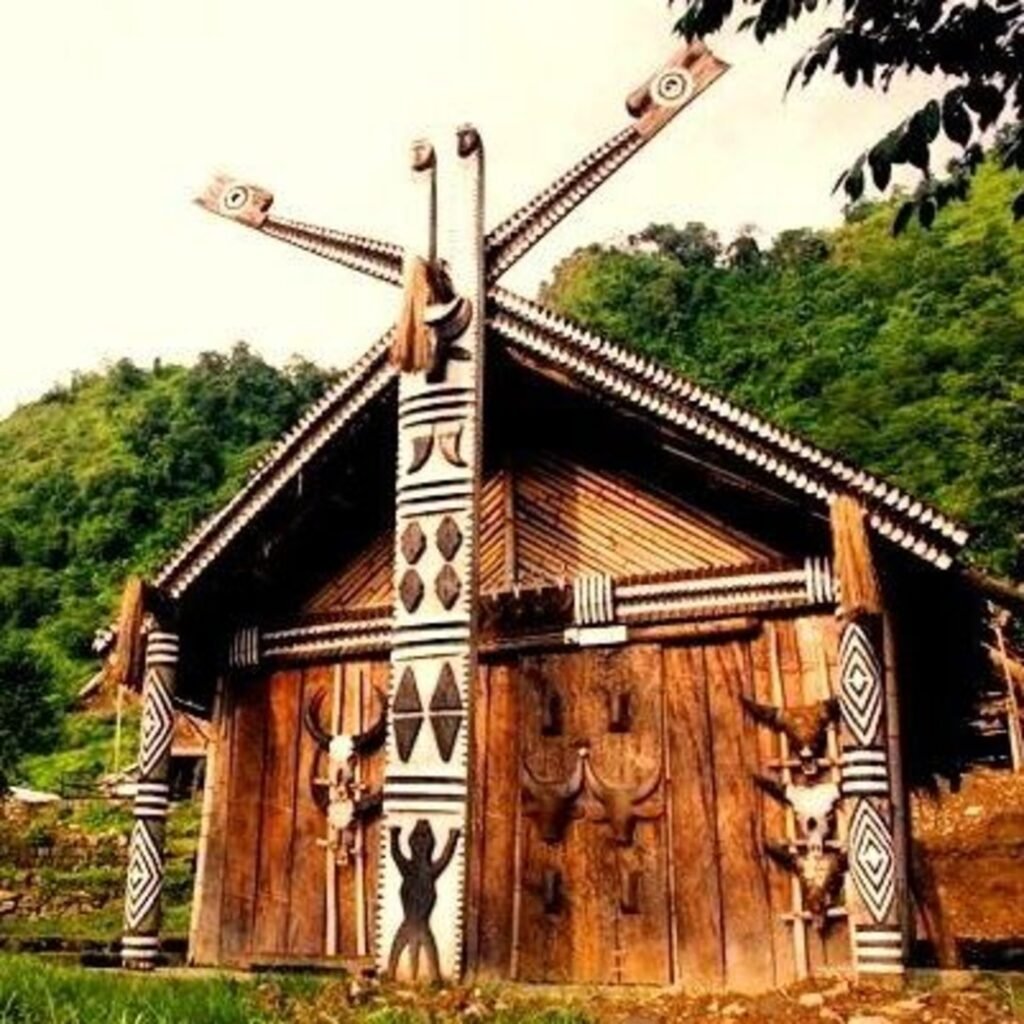
9. Village Vistas and Architectonics: Naga villages encapsulate microcosms of social stratification and unity. The Morungs, repositories of knowledge and bastions of communal cohabitation, stand as architectural symbols. Elevated dwellings bear intricate carvings, shielding inhabitants from nature’s wild tempests and inundations. The elaborately adorned wooden panels bespeak the aesthetic prowess of the Naga people.
10. Triumphs and Progress: The tribulations surmounted by Nagaland through the epochs have been the crucible of remarkable strides. The birth of the Hornbill Global Film Festival, a spin-off of the Hornbill Festival, emerges as a beacon for the burgeoning cinematic endeavor. Initiatives such as the Kohima Institute advocate for education, inquiry, and intercultural discourse, heralding a dynamic trajectory for Nagaland’s future.
Bonus: Richness of Biodiversity: Nagaland’s natural splendor is a veritable marvel. The Dzukou Valley, aptly dubbed the “Valley of Blooms,” stands as a haven harboring unique and endemic botanical species. The migratory sojourn of the Amur Falcon, a fleeting spectacle, underscores Nagaland’s significance as a biodiversity haven.
In summation, Nagaland’s enigmatic panorama is the woven tapestry of its tribes, traditions, and the harmonious coalescence of antiquity and innovation. With every unveiling, a deeper stratum of this northeastern gem is revealed, beckoning the global voyager to unearth the mystique and enchantment enshrouded within its bounds. As Nagaland continues its ceaseless metamorphosis, it extends an invitation to explorers and enthusiasts to be enveloped by its cultural grandeur, forging connections and insights that transcend geographical confines.
